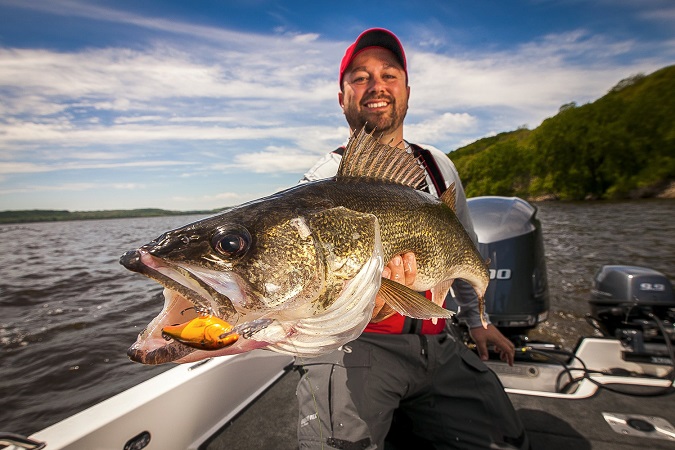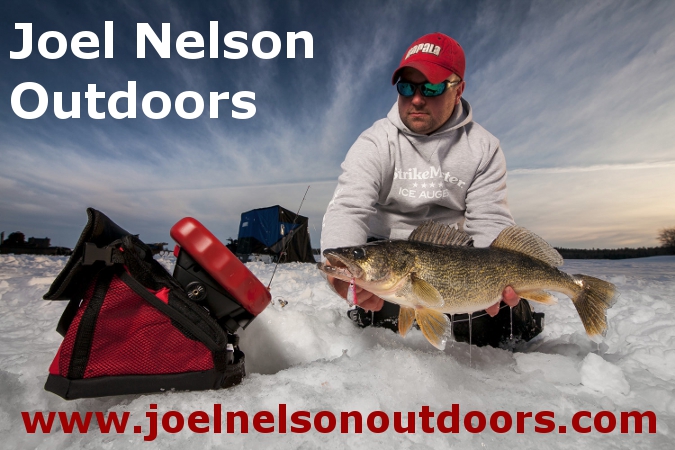Every year, the first weeks of June see some of the fastest fishing of the season. This season, with a warm early spring, the affect has been accelerated. What species are we talking about you may ask? The simple answer is that it doesn’t matter. Whether you like gills in the shallows, or walleyes on the breaks, anything and everything that swims seems to have a favorable disposition this time of year. As water temperatures warm, lakes, ponds, and rivers become veritable factories, churning out increasing productivity with each passing day. From the bottom up, biologically speaking, varieties of vegetative growth spur phytoplankton and zooplankton to rapidly reproduce, and drive invertebrates, terrestrials, and minnow species to the feast. The fish we target are not far behind, with the exception of a few species that are actively engaged in the spawn. Bottom line – fish are establishing summer patterns, and actively feeding amongst the array of developing food sources. Demand is high, yet supply in terms of food resources are just getting into gear.

The sportsman’s dilemma then becomes a selection process of determining which bites to fish among the embarrassment of riches that presents itself. I’ll describe a few of my favorite bites to target during this time period, in the hopes that even if weather, fishing funks, or particular systems aren’t producing that species, you’ll have more than enough other options to try-out. No matter what species you’re after however, think aggressive. Now is not the time for minutia and finesse tactics. Cover water, find fish, and go right at them.
Nesting Gills – I hesitate to mention this one, as the negative impacts to bluegill fisheries by high-grading the largest bluegills in the system during this time of year are well documented. Still, responsible angling for these beauties can be enjoyed, specifically by cruising shallows with polarized sunglasses while looking for the tire-sized depressions often made in large groups by the ever-so-important males. My favorite way to target them is to cast a weightless #8 or #10 VMC hook with a chunk of crawler under a clip-on pencil bobber. Should the bobber elevate off the water even slightly, you know you’re being bit, and the slow fall of the unweighted setup really does the trick even in heavily pressured waters.
Trolling for Walleyes Two Ways – Crankbaits put behind the boat and trolled at various speeds will really pull fish aboard during this period. It’s an ultra-efficient method for both finding AND catching fish, but depending on the depth the fish are scattered, you may need to come at it from two different angles. The first, when fish are in 8-10 FOW, either on overcast or windy days and earlier in the season, long-line #5 Shad Raps in Gold, Perch, Crawdad, or Firetiger patterns. Experiment between 80, 100, to 120ft. of line or more behind the boat to dial-in the combination for when you’re fishing. The second type of trolling that can produce fast action during this time period is leadcore trolling. We’re not talking about dredging the 30 foot depths yet, but often, using leadcore in depths of 15 -25 FOW will more effectively keep the bait near bottom where the walleyes are. My favorite baits on leadcore are the #5 Jointed Shad Raps in similar colors as above. If you don’t have a leadcore setup yet, take the plunge! It’s not as scary as it sounds and solves many of the problems of traditional weighting systems.
Cottonwood Seed Largemouths – A great phenological indicator of great bass activity annually seems to be the flying fuzz from cottonwood trees. I can think back to many memorable bass outings on small ponds and southern Minnesota lakes that included a fair dose of picking the fur off of your line. Keep it simple and fish top-water lures like buzzbaits, frogs, or Skitter Pops for maximum enjoyment. Fish will very readily strike heavy plastics fished in a variety of depths and means as well, so if fishing with a partner, divide and conquer in terms of bait selection.
Jerkbait Smallies – As water temps warm and fish activity increases, no species seems to respond as well as smallmouth bass. On the front end of this time period, smallies are pre-spawn, with some of the males just starting to think about nesting. At this point, they’re shallow, and eating a variety of prey, but will display some aggressive behavior towards stickbaits, slash-baits, or any neutrally buoyant bait worked quickly. At its peak, this bite really turns on with X-Raps and similar slash-baits being worked extremely quickly. “Ripping it like an idiot,” as it has been described to me, is not too fast to work these baits when the bite is prime. The curiosity of a smallmouth is piqued, and its territorial nature demands an exploratory jaunt for what is making all that noise. Fish will hit on the pause, and often already be hooked up as you go to make your next “slash.”
These are broad bites, and dozens of other patterns are developing in a dynamic fashion during this time of year. One gives way to another as fish begin to establish a more consistent pattern, so don’t be alarmed if it’s here today, and gone tomorrow. Alas, it’s just like the fall hunting season, which comes and goes far too quickly, but it’s something to be thoroughly enjoyed when it’s hot. That “get it while you can” seasonality of these pursuits adds to the allure of each and every one of these patterns, urging me to get out and fish as much as I possibly can during this period.

